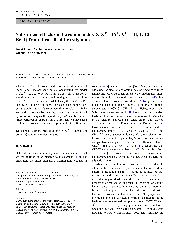摘要
The electronic and molecular structures of mono- and dihalocarbene anions constructed by model (CXX2aEuro cent a')-X-1 (X-1, X-2 = H, F, Cl, Br, I), as well as the corresponding carbenes (CXX2)-X-1 and analogous silicon-anions (SiXX2aEuro cent a')-X-1, have been studied in detail using the B3LYP, MP2, and QCISD(T) levels of theory. Our calculated findings suggest that stabilization of the compounds is associated with the size of the halogen substituent X, which is further confirmed by ionization energies, the spin density (S (d)), and the second-order perturbative energies (E(2)). Besides, we have also explored the source of the anions' proton affinity difference.
